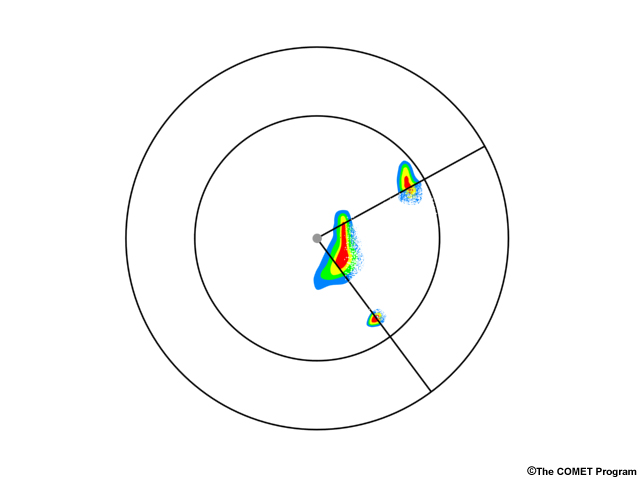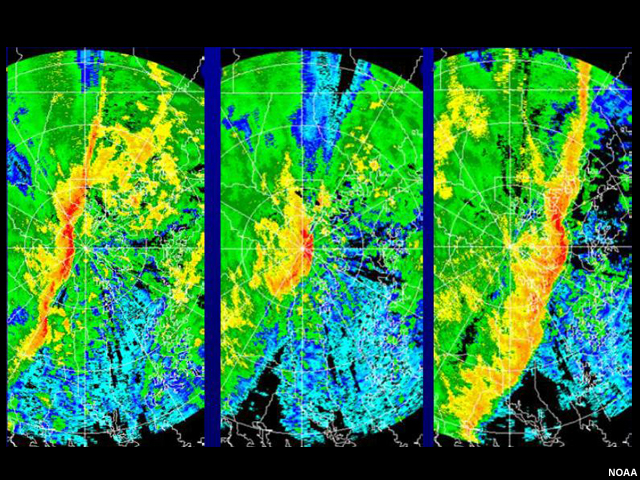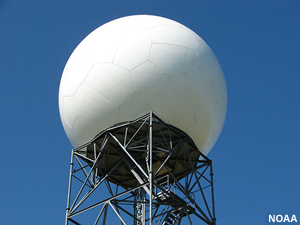Limitations » Processor Assumptions » Attenuation
The second assumption is that attenuation due to absorption of electromagnetic energy by the targets is negligible. The amount of attenuation that can occur depends strongly on the intensity of precipitation and the wavelength of the pulses transmitted by the radar. In this illustration, you can see that most of the radar's energy is absorbed by the particles in the closest box, so the strongest returns would be from that area, rather than from the more distant box—even though it has about the same number of targets.

Consider a situation in which an intense thunderstorm is close to the radar. Attenuation occurring in the heavy precipitation core of the closest storm can cause precipitating areas downrange to appear less intense. In severe cases of attenuation, some precipitation occurring downrange may not be displayed in the image at all.

In this example from a 5-centimeter (5-cm) wavelength airport Doppler weather radar, a line of thunderstorms is approaching the radar in the first image. When the strongest part of the storm passes overhead, attenuation becomes apparent in the middle image. Reflectivity values are especially reduced to the north and south, where the most intense precipitation aligns with the beam. In the last image, after the most intense precipitation moves past the radar, we can again see the rest of the storm structure. Generally, attenuation will increase as radar pulses travel through increasing amounts of precipitation.


Ten-centimeter (10-cm) wavelength radars, like those in the NEXRAD WSR-88D system, experience little attenuation—that is one of the reasons that wavelength was chosen for the system. In heavy precipitation, 3-cm and 5-cm wavelength radars, usually found in mobile platforms, airport surveillance and military applications, can suffer attenuation losses as much as 100 times higher than those experienced by a 10-cm radar. Nonetheless, this phenomenon may still pose problems for 10-cm radars if very heavy precipitation occurs over large areas close to the radar.